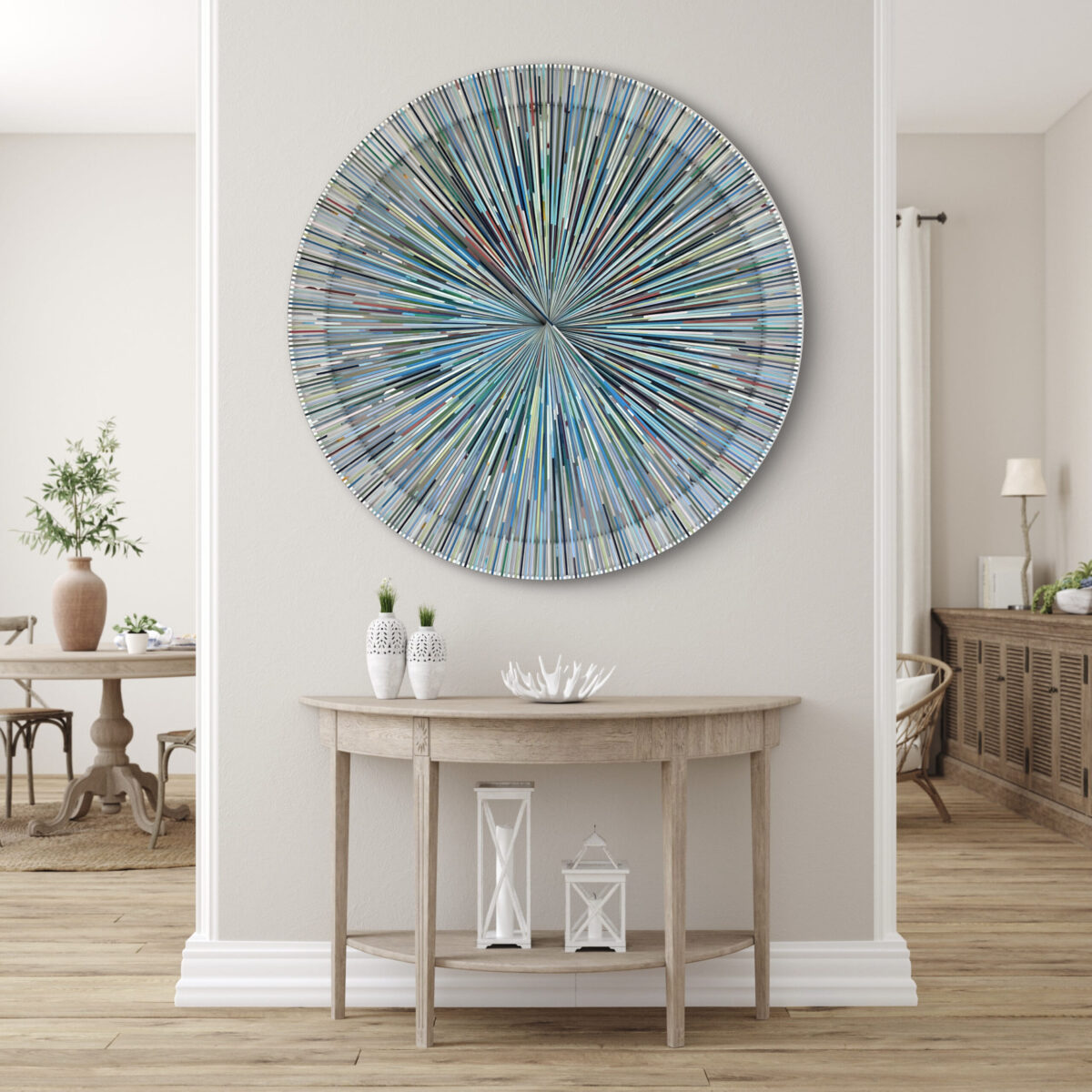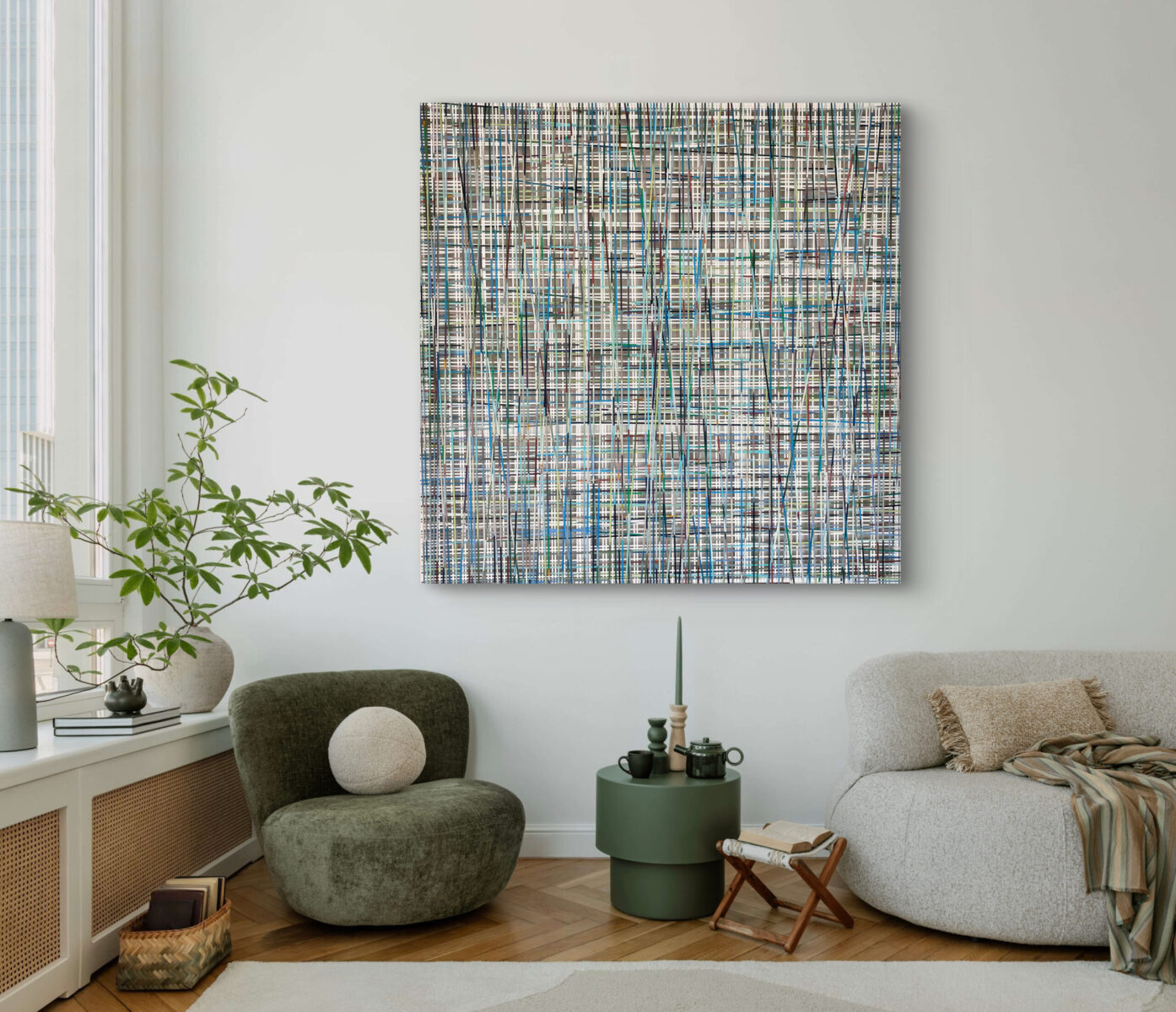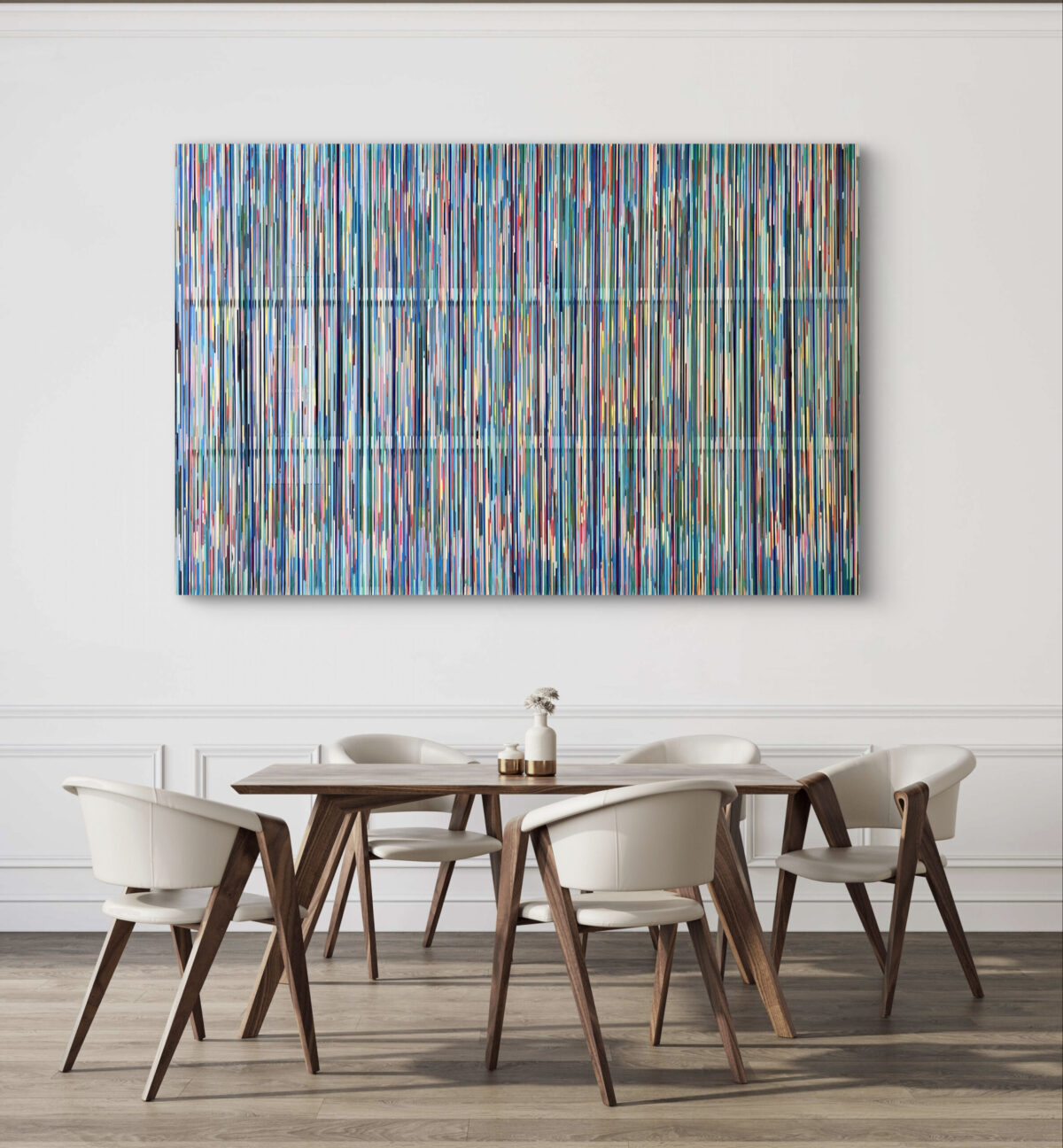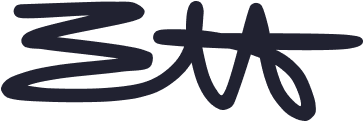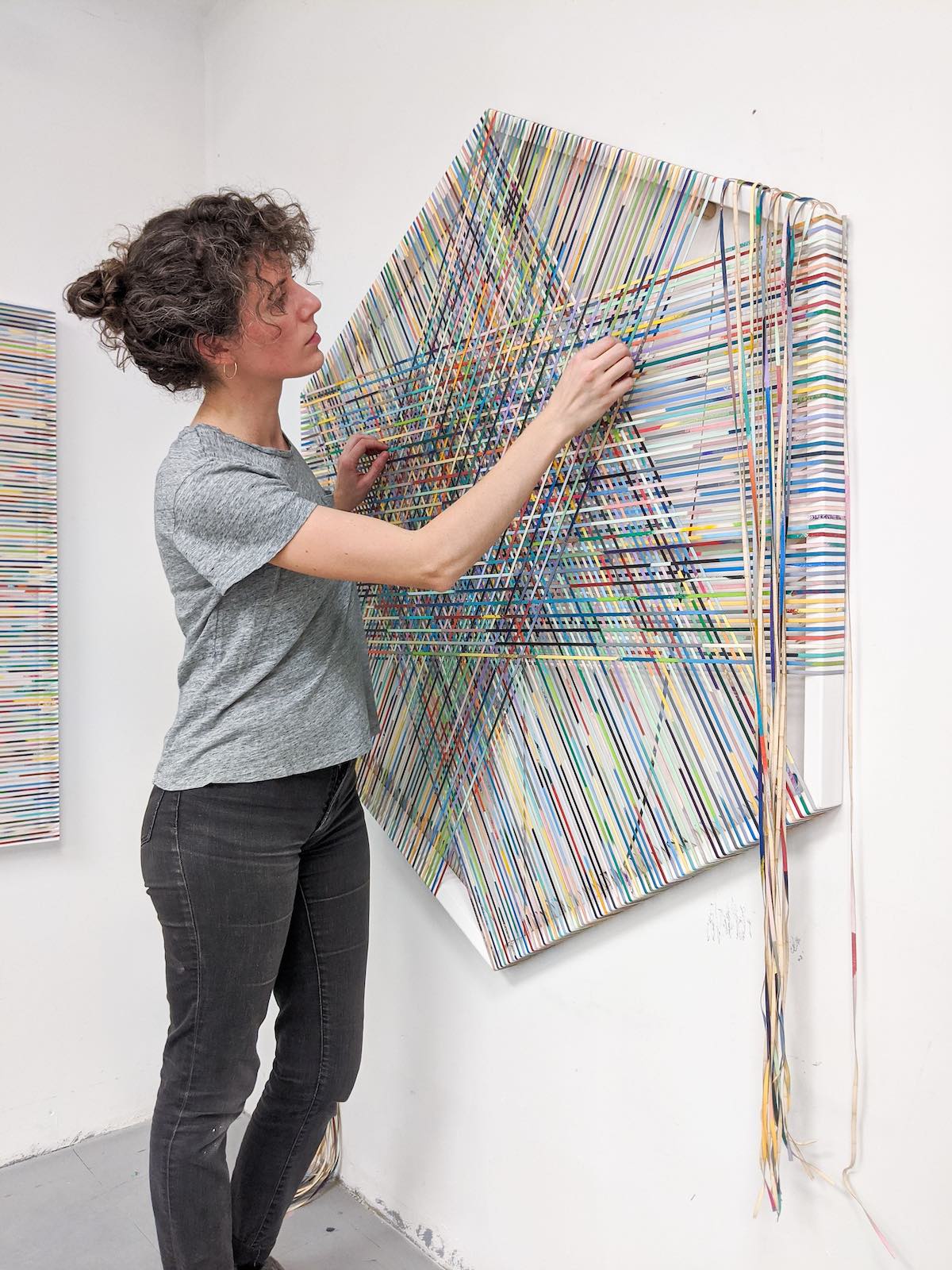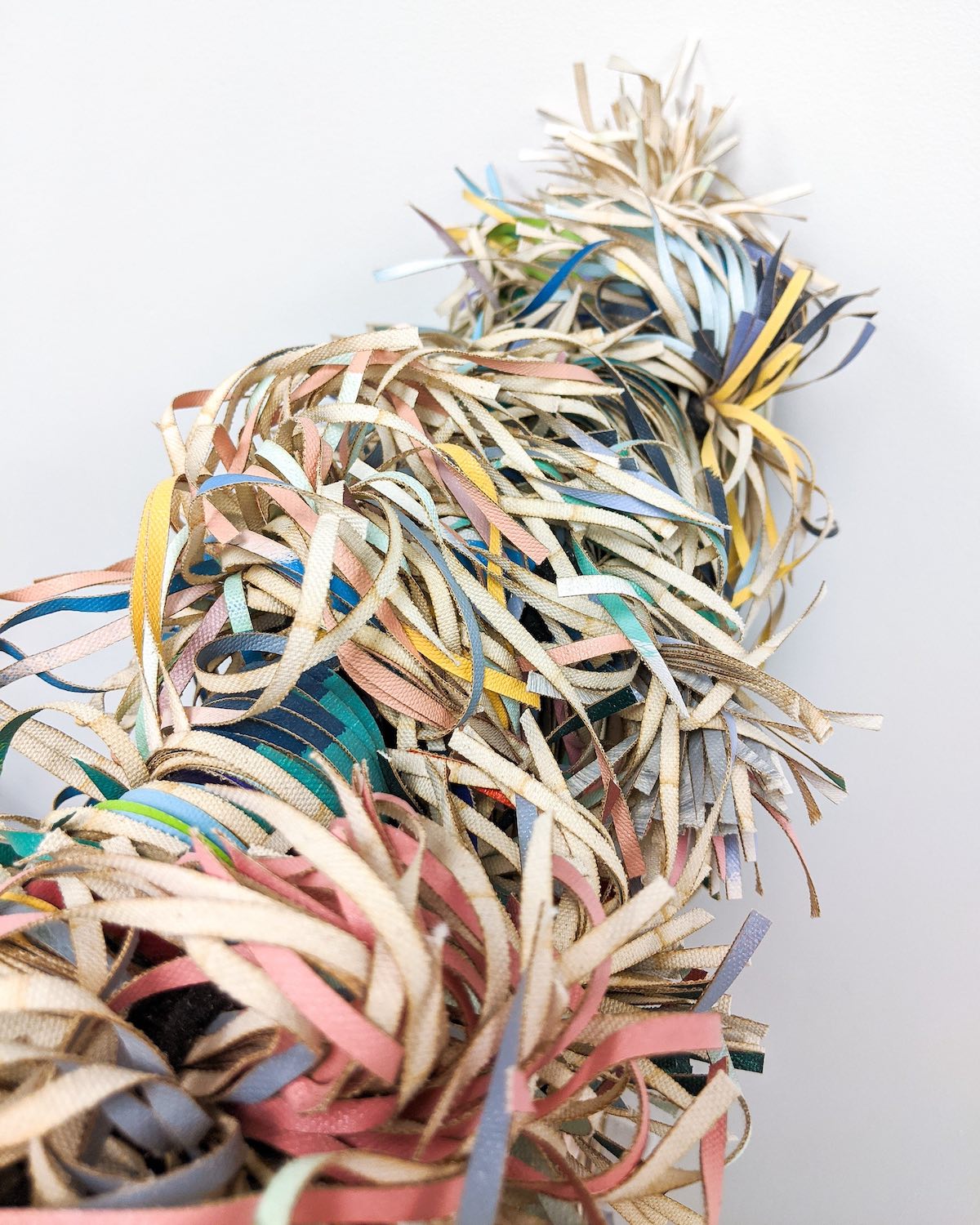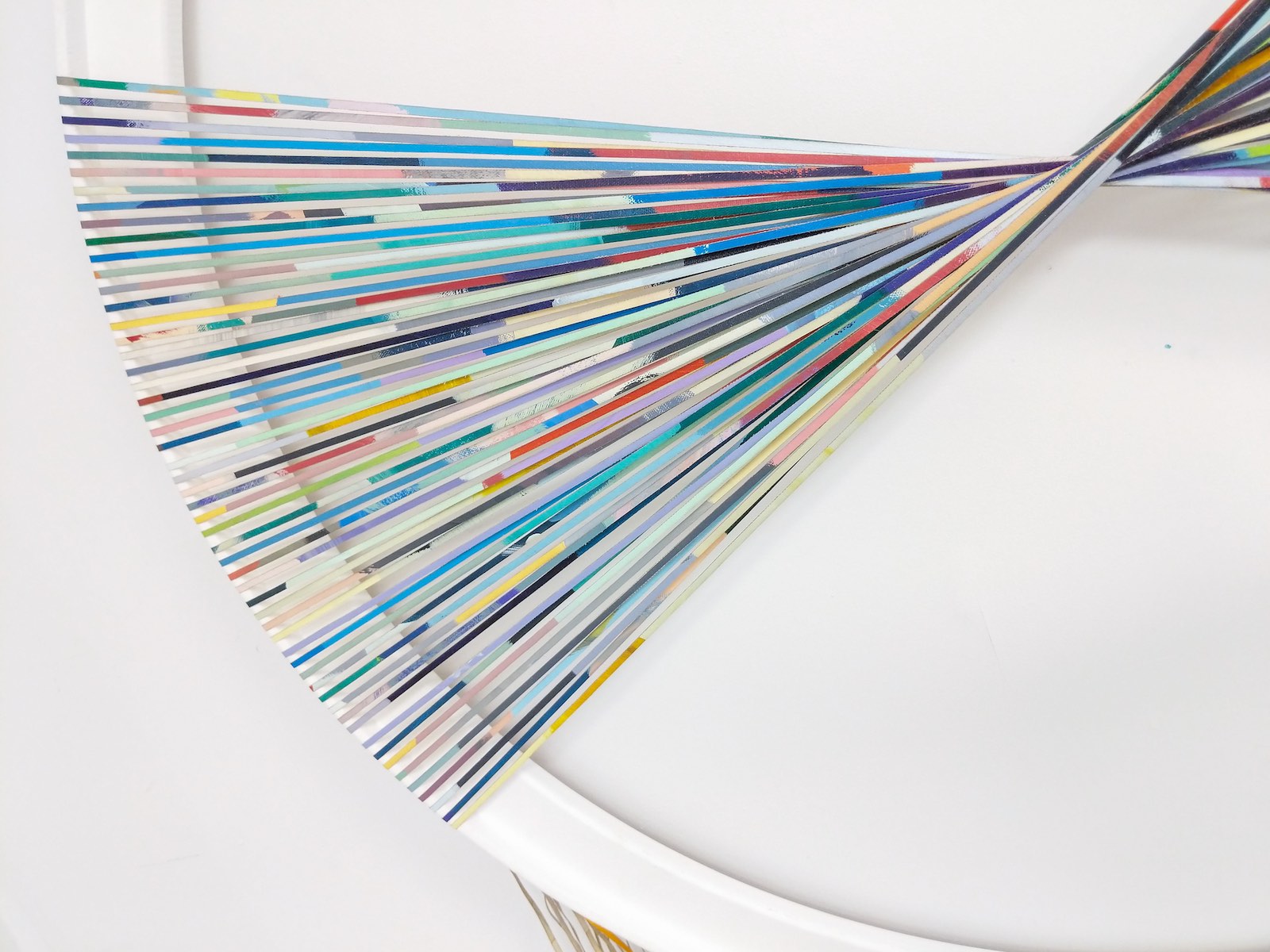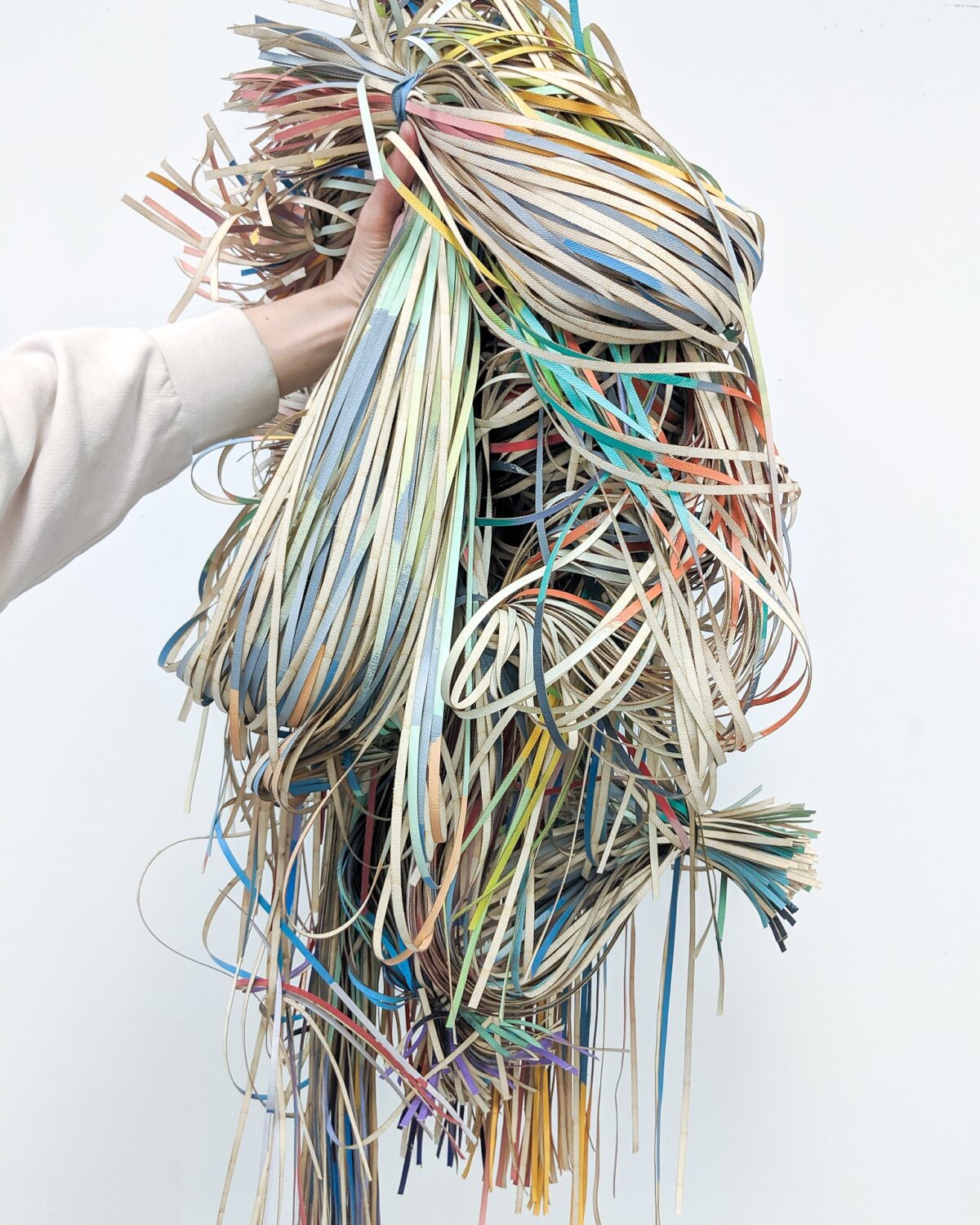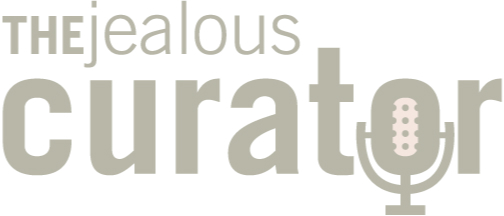ABOUT
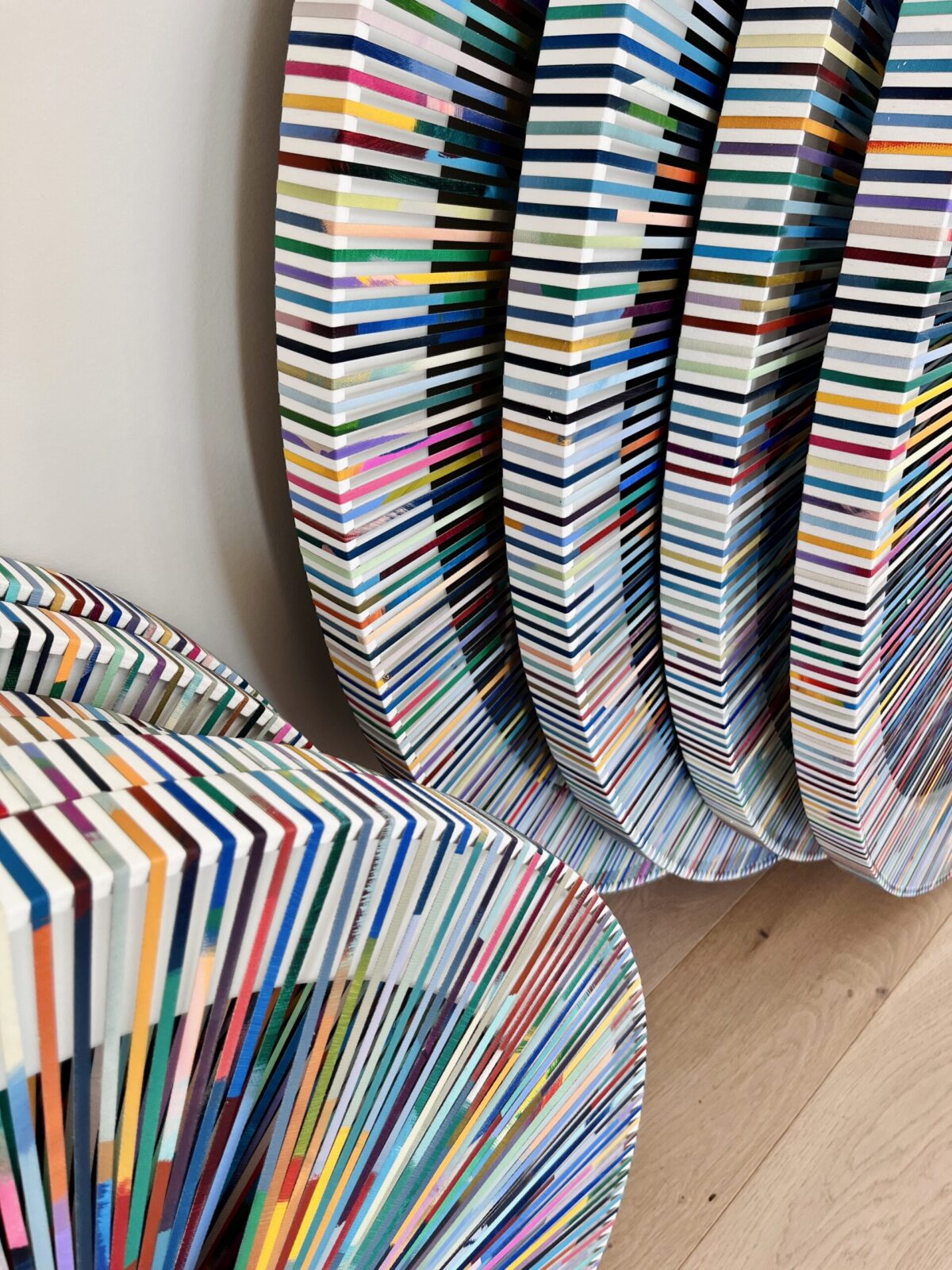
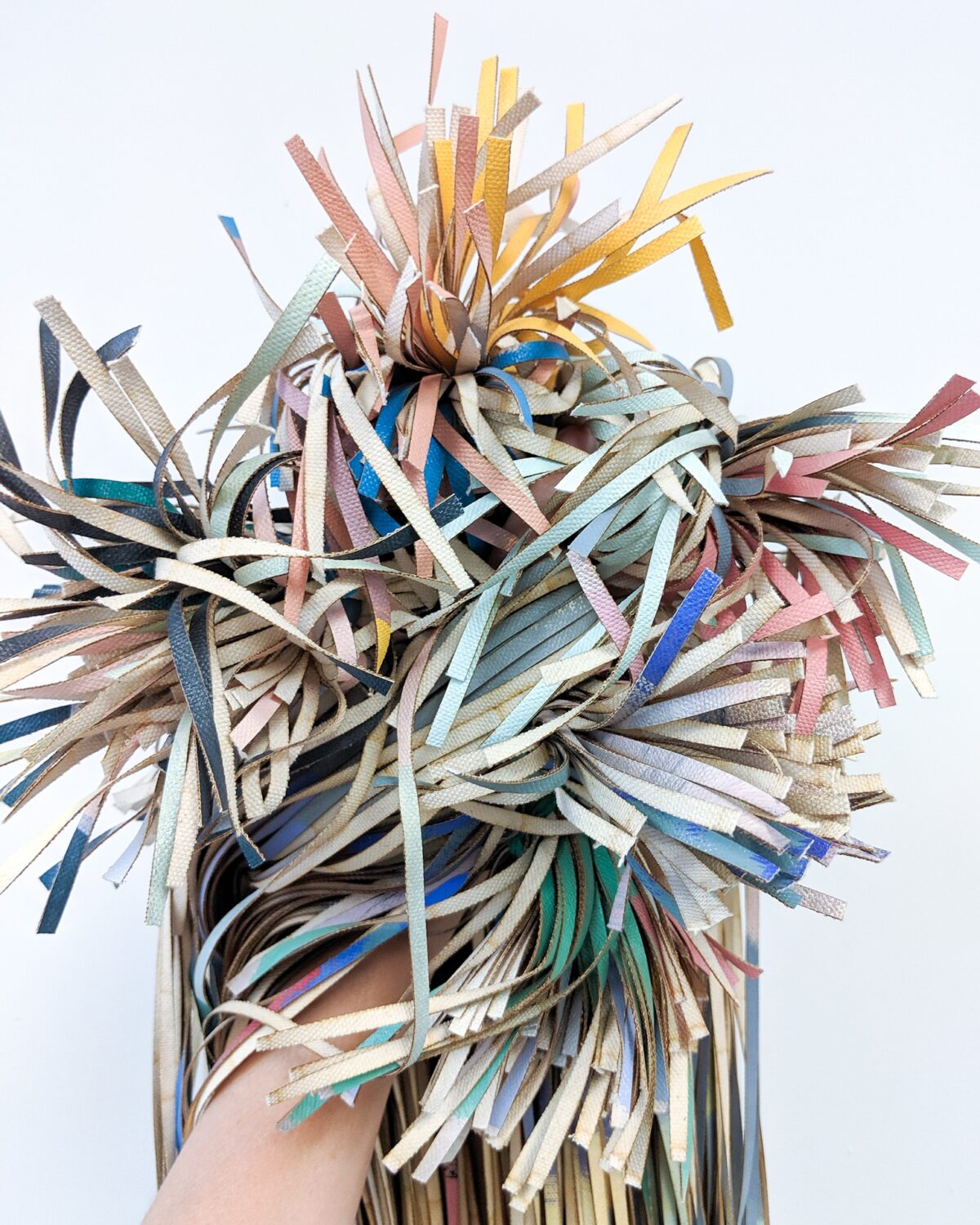
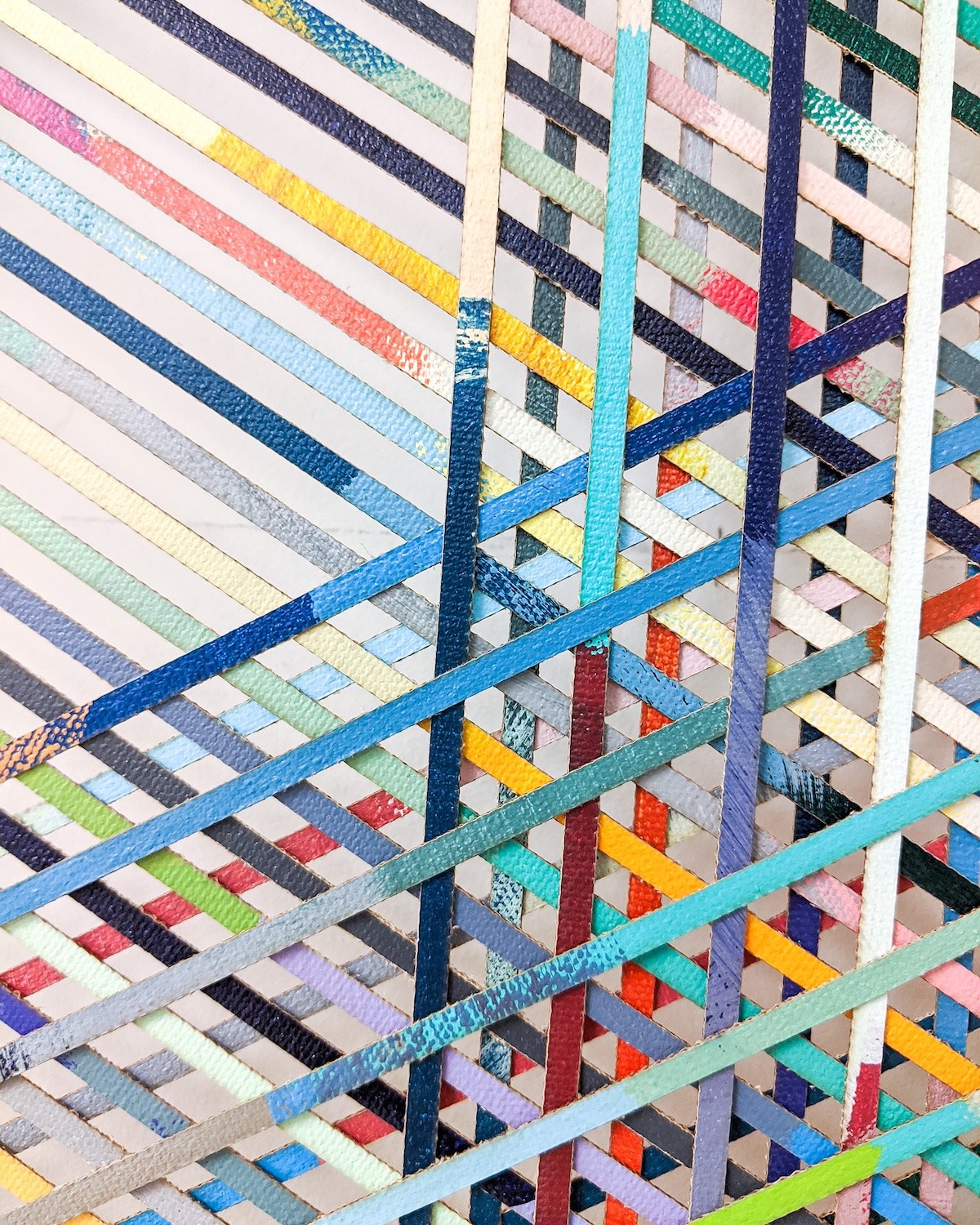
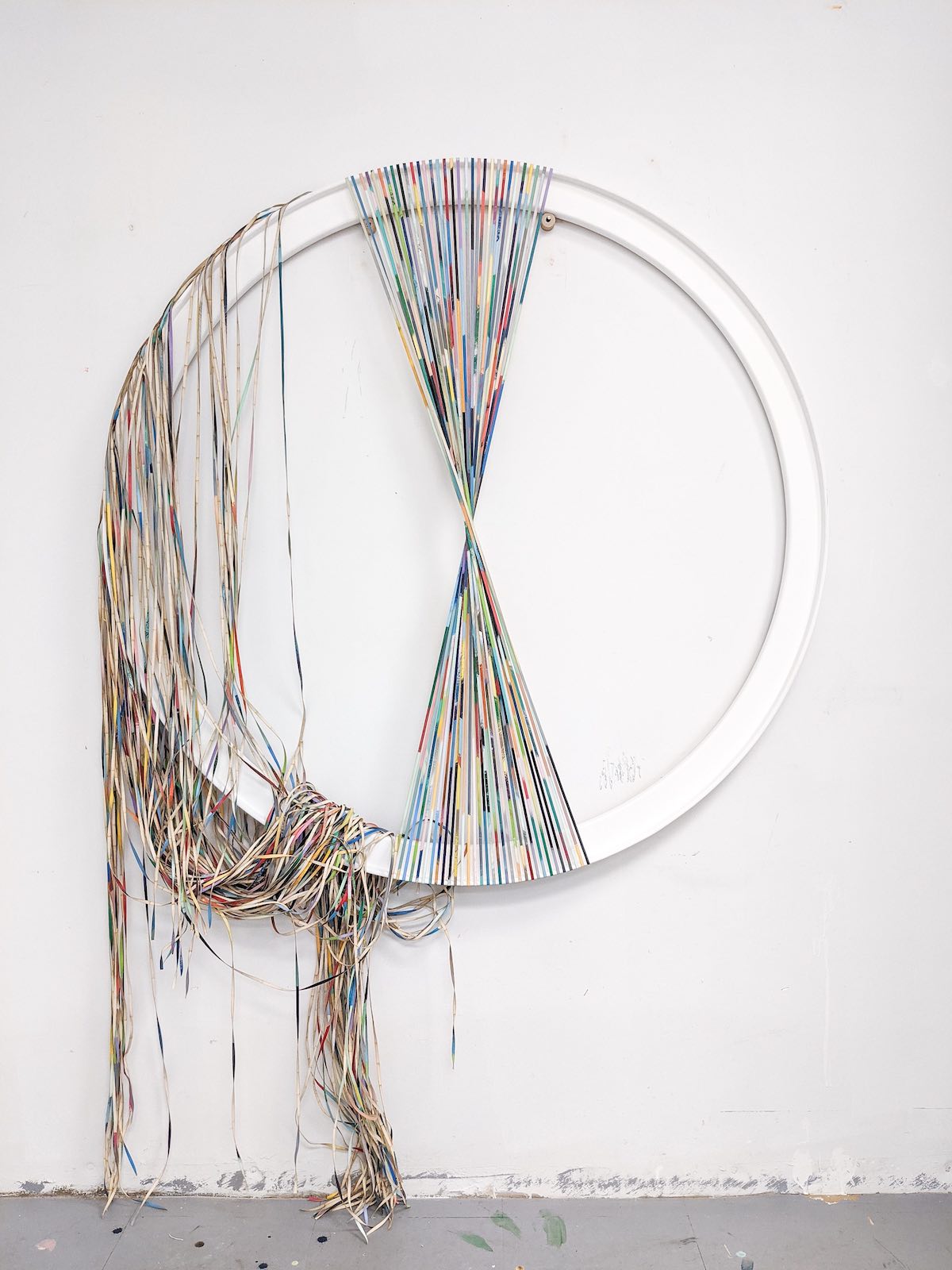
Artist Statement
Elisabeth Heidinga’s artistic practice seamlessly merges the traditions of painting and assembly, offering a bold reimagining of abstraction. Her process begins with expansive acrylic paintings on canvas, which are deconstructed into fine strips. These fragments are then meticulously woven or reassembled, transforming discrete elements into cohesive yet dynamic compositions. The interplay of structure and intuition in Heidinga’s work creates a dialogue between abstraction, craft, and conceptual art, challenging viewers to reexamine their perceptions of balance, connection, and dissonance.
Heidinga’s work is deeply symbolic, reflecting the complexities of human experience and the multiplicity of identity. Drawing on her European heritage and her time in multicultural Toronto, her compositions resonate as metaphors for cultural intersections and the weaving together of diverse narratives. Each strip represents a fragment of memory, culture, or identity, and together they form intricate and harmonious works that challenge traditional associations between painting and craft. Her creations reflect a synthesis of opposing forces—presence and absence, connection and tension—offering a fresh perspective on the interplay between fragmentation and unity.
Currently based in the south of France, Heidinga imbues her pieces with a profound sense of interconnectedness. Her practice invites viewers into an exploration of layered realities, transforming deconstruction into a meaningful act of creation. Through her deliberate and evocative methods, she crafts art that resonates with both quiet reflection and dynamic energy.
A graduate of OCAD University in Toronto, where she earned a BFA with honours, Heidinga has exhibited in esteemed venues, including the Art Gallery of Ontario. Her work has been showcased at exhibitions and art fairs across North America. Represented by Stephanie Breitbard in San Francisco and Menlo Park / California, Breitbard Williams in Dallas / Texas and S16 Gallery in Montreal, Canada, her pieces have captivated collectors and institutions alike, cementing her reputation as a significant and compelling voice in contemporary art.
FR La pratique artistique d’Elisabeth Heidinga fusionne harmonieusement les traditions de la peinture et de l’assemblage, offrant une réinterprétation audacieuse de l’abstraction. Son processus commence par de vastes peintures acryliques sur toile, qui sont déconstruites en fines bandes. Ces fragments sont ensuite minutieusement tissés ou réassemblés, transformant des éléments discrets en compositions cohérentes mais dynamiques. L’interaction entre structure et intuition dans l’œuvre de Heidinga crée un dialogue entre abstraction, artisanat et art conceptuel, invitant les spectateurs à repenser leurs perceptions de l’équilibre, de la connexion et de la dissonance.
L’œuvre de Heidinga est profondément symbolique, reflétant les complexités de l’expérience humaine et la multiplicité de l’identité. Puisant dans son héritage européen et son passage à Toronto, ville multiculturelle, ses compositions résonnent comme des métaphores des intersections culturelles et du tissage de récits divers. Chaque bande représente un fragment de mémoire, de culture ou d’identité, formant ensemble des œuvres harmonieuses et complexes qui défient les associations traditionnelles entre peinture et artisanat. Ses créations incarnent une synthèse des forces opposées – présence et absence, connexion et tension – offrant une nouvelle perspective sur l’interaction entre fragmentation et unité.
Installée dans le sud de la France, Heidinga insuffle à ses œuvres un profond sentiment d’interconnexion. Sa pratique invite les spectateurs à explorer des réalités superposées, transformant la déconstruction en un acte de création porteur de sens. Par ses méthodes réfléchies et évocatrices, elle crée des œuvres qui résonnent à la fois par leur énergie dynamique et leur invitation à la réflexion.
Diplômée avec mention de l’OCAD University à Toronto, où elle a obtenu un BFA, Heidinga a exposé dans des lieux prestigieux, notamment à l’Art Gallery of Ontario. Ses œuvres ont été présentées lors d’expositions et foires d’art à travers l’Amérique du Nord. Représentée par Stephanie Breitbard à San Francisco et Menlo Park, Breitbard Williams à Dallas, et S16 Gallery à Montréal, ses pièces captivent collectionneurs et institutions, affirmant sa réputation en tant que voix incontournable de l’art contemporain.
